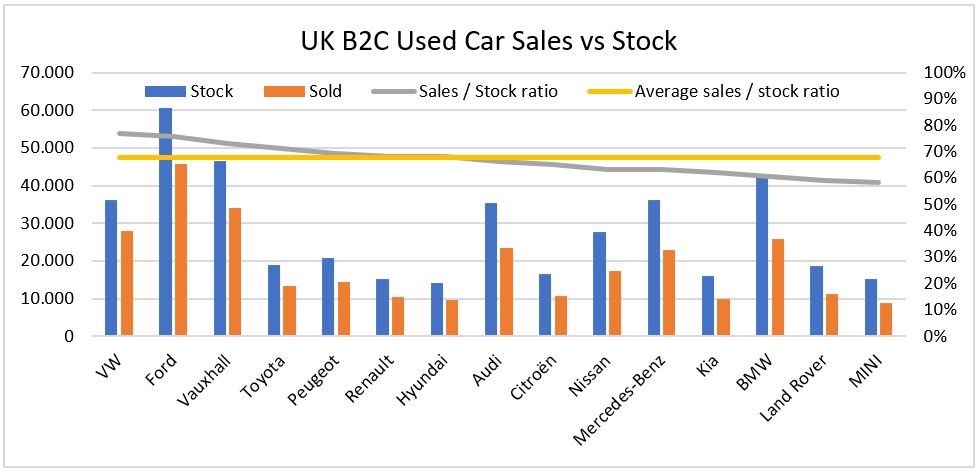
→ While rectifying double sided errors, suspense account will not get affected. Sale of old machinery at book value ₹ 3,000 was credited to sales account as ₹ 5,000. ‘Petty cash is a small sum of money held on the premises of a business to cover minor monetary needs. Office supplies, cards, flowers, and other similar items are examples of these payments. While suspense accounts are used for temporary transactions, they can be useful in keeping your books clean and organized.

When you have all of the necessary information, reverse the suspense account entry and start making an entry in the permanent account. The suspense account is closed, and the transaction is posted to the correct account. Create a suspense account in your general ledger for suspense account journal entries. Suspense account entries would then take either a credit or a debit format. Also, in another account, enter the same amount with an opposite entry. After that, he consulted with Mr. Gladwell who clarified the nature of the operation.
What is the approximate value of your cash savings and other investments?
However, we must ensure that the suspense account balance is zero and that all entries are transferred to their respective accounts in order to provide a more accurate representation of our books. 5.8.1 Maintenance of Broadsheet for suspense heads is necessary to ensure that the relevant suspense head is cleared as early as possible and the amount outstanding in ‘Suspense’ is duly supported by itemised details. It also facilitates of reconciliation between the broadsheet figures and the account figures on monthly basis- and rectification of error, if any, in the accounts figures. A suspense account is a general ledger account in which amounts are temporarily recorded.
- Streamline and automate detail-heavy reconciliations, such as bank reconciliations, credit card matching, intercompany reconciliations, and invoice-to-PO matching all in one centralized workspace.
- Transfer suspense account entries to their respective accounts to bring the suspense balance to zero.
- Current Liabilities are those liabilities which require the use of Current Assets for settlement.
- Move suspense account entries into their designated accounts to make the suspense balance zero.
- However, good business practice is to verify that these accounts show a zero balance at the end of each reporting period.
- It may be not necessary to copy out in detail the transactions paid for during the month.
His accountant then reclassified the operation as a fixed asset purchase and the suspense account balance was removed. The main purpose of setting up a suspense account is to keep track of temporary transactions that have not yet been posted to the ledger account. These temporary transactions are “suspended” or held in suspense until they can be identified with a specific ledger account. The rules that mortgage servicers must follow are spelled out by the Consumer Financial Protection Bureau, which enforces the federal Real Estate Settlement Procedures Act. The servicer must also explain what the borrower needs to do in order to have that money applied to their mortgage payment.
Classification of Suspense Accounts
You might receive a partial payment from a customer and be unsure about which invoice they’re paying. Hold the partial payment in a suspense account until you contact the customer. When you find out the invoice, close the suspense account and move the amount to the correct account. Eventually, you allocate entries in the suspense account to a permanent account. There is no standard amount of time for clearing out a suspense account. Most businesses clear out their suspense accounts monthly or quarterly.
If You Are About To Fly, Don’t Watch These Airplane Crash Movies – Giant Freakin Robot
If You Are About To Fly, Don’t Watch These Airplane Crash Movies.
Posted: Mon, 07 Aug 2023 02:24:22 GMT [source]
Close the account after moving the entry to the correct permanent account. A trial balance is the closing balance of an account that you calculate at the end of the accounting period. When debits and credits don’t match, hold the difference in a suspense account until you correct it. When you open an accounting suspense account, the transaction is considered in suspense. This keeps uncategorized transactions separate from categorized transactions. It’s an account for bookkeeper to use which can be posted any difference on the trial balance pending the discovery of errors; the errors when found are corrected by debiting and crediting the suspense account.
What is a Suspense Account?
Unlock growth capacity with tax-effective intercompany operations. Continuously monitor for risk with automated fluctuation analysis. Match, analyze, and reconcile millions of transactions in minutes. Drive visibility, accountability, and control across every accounting checklist.
Accordingly, when any charges are transferred from one job or operation to another, the transfer should be made by a credit and minus credit entry. Items or balances which may become irrecoverable should not be so transferred until ordered to be written off. Items in the “Miscellaneous Works Advances” account are cleared either by actual recovery, nature of suspense account or by transfer, under proper sanction or authority to some other head of account. Transfers within the division should be accounted for against a single item “Deduct Transfers within Division” before the total for the entire head “Stock” is struck. It may be not necessary to copy out in detail the transactions paid for during the month.
What is a Suspense Account in QuickBooks?
Pass journal entries to correct them, and ascertain the difference in the Trial Balance. A suspense account is an area in which transactions or amounts are temporarily recorded. You would use this account primarily for transactions that could not be fully determined at the time they are recorded.
Imagine you purchase a fixed asset by making a payment, but you won’t get the item until it is fully paid off. Without even designating the payment to a specific machinery account or piece of equipment, you may record the payments using the suspense account. The trial balance, which is found under the title Other Assets, shows the suspense account. Until you identify the causes of the imbalance, this stays exactly where it is. Moreover, if your credits are greater than your debits on the trial balance, the difference registers as a credit in your suspense account. Machinery purchased on credit from Raman for ₹ 20,000 recorded through Purchases Book as ₹ 6,000.

A contractor’s bill for extension of premises amounting to ₹ 2,750 has been debited to building repairs account. A cheque for ₹ 200 received from P.C Joshi has been dishonoured on maturity and was passed to the debit of Allowances Account. The total of the Returns outward book, ₹ 420 has not been posted in the ledger. → Thus with the help of suspense a/c trial balance is artificially tallied.
Until they withdraw, the remittance stays in a suspense account, earning the financial institute or the BB enabler float/interest on that money. When customer withdrawal is completed, the money moves from the suspense account to the account of the agent who facilitated the cash withdrawal. For example, if your company’s opening ledger has account numbers 1-98, the next account number available to your business will be 100. However, it is recommended to keep a minimum of 25 ledger accounts in order to avoid errors when posting entries. If a bookkeeper is unsure about which account to debit or credit in a transaction, they can temporarily place the entry in a suspense account. Timely, reliable data is critical for decision-making and reporting throughout the M&A lifecycle.
While the responsibility to maintain compliance stretches across the organization, F&A has a critical role in ensuring compliance with financial rules and regulations. Together with expanding roles, new expectations from stakeholders, and evolving regulatory requirements, these demands can place unsustainable strain on finance and accounting functions. The path from traditional to modern accounting is different for every organization.
Without accurate information, organizations risk making poor business decisions, paying too much, issuing inaccurate financial statements, and other errors. Working capital, cash flows, collections opportunities, and other critical metrics depend on timely and accurate processes. Ensure services revenue has been accurately recorded and related payments are reflected properly on the balance sheet. When you record uncertain transactions in permanent accounts, you might have incorrect balances. Suspense accounts help you avoid recording transactions in the wrong accounts.

List the suspense account under “Other Assets” on your trial balance sheet. After you make corrections, close the suspense account so that it’s no longer part of the trial balance. Sometimes, you don’t have all the necessary information for accounting. Missing or incorrect details can derail your bookkeeping efforts, but you need to record every transaction.
